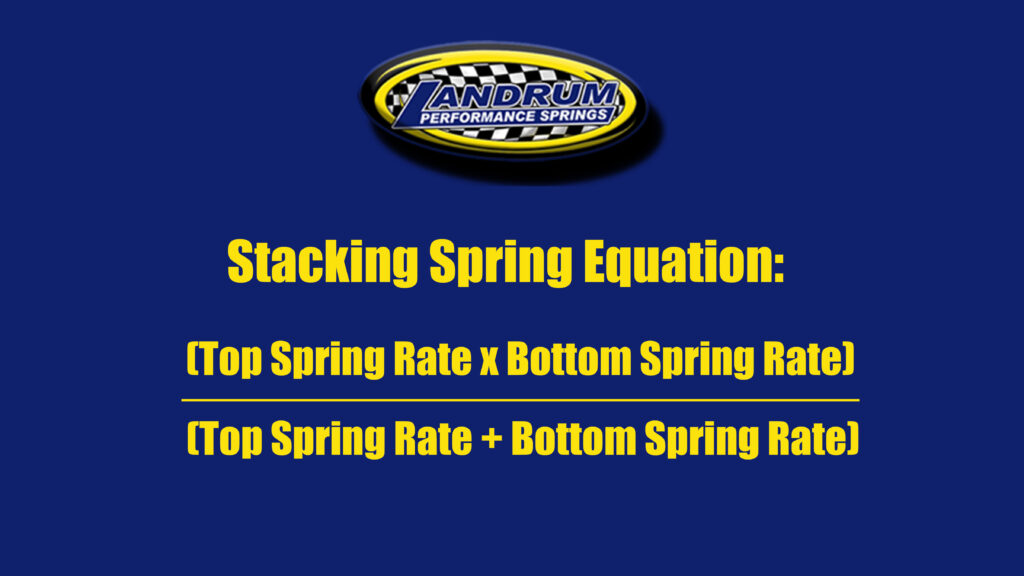
Using stacked springs allows a car to run on a very soft spring rate on entry of the turn, and progress to a heavier rate as it is needed through the middle and exit off the turn. The stacked spring concept is being used on the left rear, right front and sometimes on the right rear to fine tune the race car.
There are two different ways to run stacked springs. One is called Stacked Springs because all you are doing is stacking two springs in series, with the same or different rates, to achieve a longer spring that is softer rate than either of the springs used.
For example, if you stack a 10-inch 200 rate and 6-inch 200 rate spring, you get a combined rate of 100 pounds per square inch. You may not be able to find a 16-inch 100 rate spring, so this provides more spring length to use.
Another way to stack springs is to use the Dual System. This system uses two springs on tip of each other in series. The difference is you also use a stop mechanism lock out nut that stops the travel of one of the springs at some point during shock travel to where the car is then riding on only one spring.
With this system you can run a softer rate on the top and a stronger rate on the bottom. When the shock travels, the divider between the shocks moves up the shock body. Once it reaches a predetermined point, the divider hits the stop, and the top spring is no longer able to compress. Since only the bottom spring is now the only one working, its rate is what the car runs on, as long as the shock is compressed to the predetermined point.
Stacking Spring Equation:
(Top Spring Rate x Bottom Spring Rate) / (Top Spring Rate + Bottom Spring Rate) = Rate
Example:
200 x 200 = 40,000 (Top Spring Rate X Bottom Spring Rate)
200 + 200 = 400 (Top Spring Rate + Bottom Spring Rate)
40,000 ÷ 400 = 100 Rate

